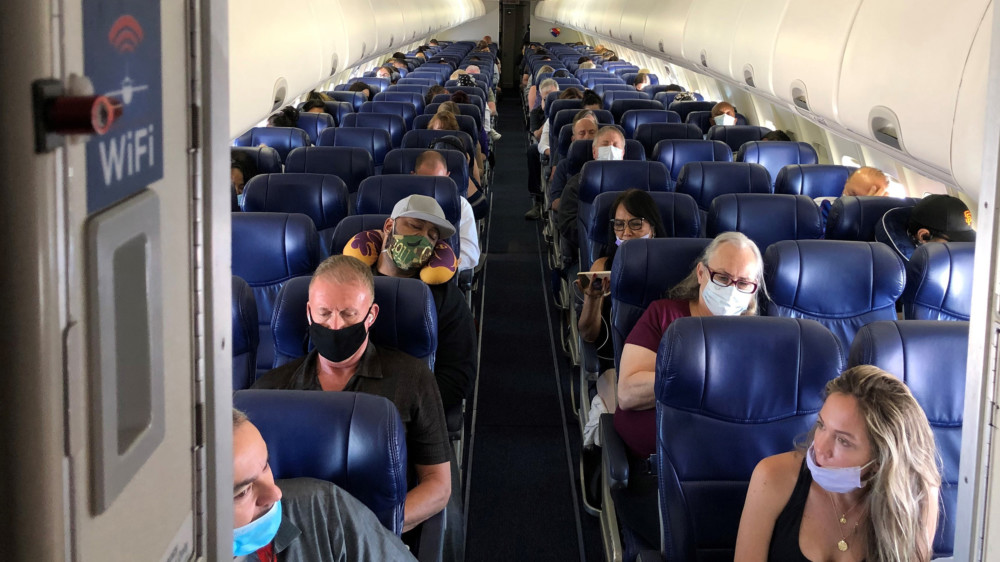By Theresa Braine
New York Daily News
WWR Article Summary (tl;dr) A new report reveals that because of the frequent exchange of air and HEPA filters on planes, over 99% of the particles containing the virus are removed from cabin air.
New York
Flying ranks below grocery shopping and eating in a restaurant when it comes to the risk of contracting COVID-19 in a public place, a new study claims.
It’s all in the ventilation and the protocols, researchers at Harvard University’s T.H. Chan School of Public Health found in their Phase One report, issued Tuesday and not yet peer-reviewed. This first installment covered travel solely on the aircraft, the researchers said; Phase Two, examining airport operations, will come out in two months.
“Analysis from the report shows that ventilation of air on aircraft reduces the possibility of exposure to COVID-19, lower than other common settings, such as a grocery store or indoor restaurant,” the team said in a statement.
“This effectively counters the proximity travelers are subject to during flights. Because of the frequent exchange of air and HEPA filters on planes, over 99% of the particles containing the virus are removed from cabin air.”
To maintain this safety level, air filtration must be combined with commonsense measures including mask wearing by both passengers and crew throughout the journey; keeping social distance and ensuring strong ventilation during boarding and disembarking; regularly disinfecting “high-touch aircraft surfaces,” and getting passengers to be honest about any symptoms and their commitment to remaining masked except when they’re eating or drinking.
“Our team found that, together with their high-performing ventilation systems, the actions that the airlines put in place — including mandatory use of face masks — significantly reduce risks of viral transmission aboard an airplane,” Leonard Marcus, co-director of Aviation Public Health Initiative, said in the researchers’ statement. “With comprehensive adherence to these preventive measures by airlines and passengers, air travel, along with other sectors of society, can responsibly return to some level of normal activity as we await development of an effective vaccine.”
The findings buttress previous studies that came to similar conclusions, one of them earlier this month. In that study, the U.S. Department of Defense worked with United Airlines to run 300 tests in six months with a single mannequin on a United plane. Measuring output from simulated coughing and sneezing with and without a mask on the mannequin, the researchers determined that all but 0.01% of particles emitted by a masked person were pumped out of the plane within minutes.
Previous studies that found a high rate of transmission during flights, especially long ones, were conducted before mask wearing was ubiquitous.
Of course, even these researchers pointed out that none of these measures are replacements for a vaccine.
“Until there has been widespread vaccination, there remains the risk of infection in all walks of public life,” the report said. “As with any activity during this pandemic, the choice to fly is a personal one and depends on a traveler’s health assessment, individual risk tolerance and the potential consequences of becoming infected.”
___
Distributed by Tribune Content Agency, LLC.














































































































































































































































































































































































